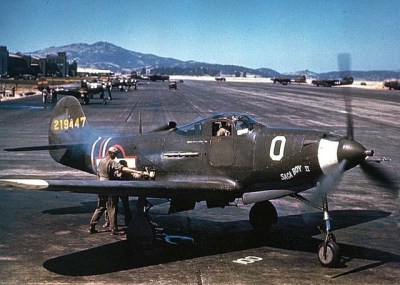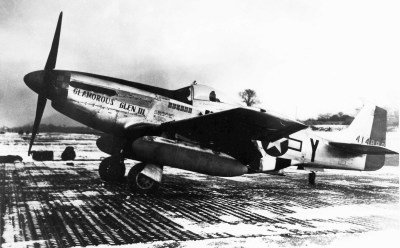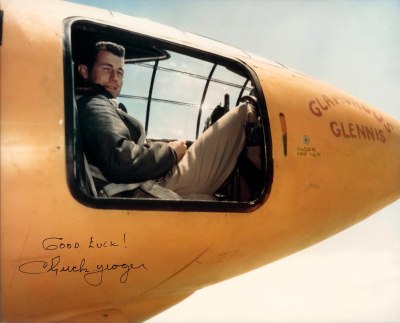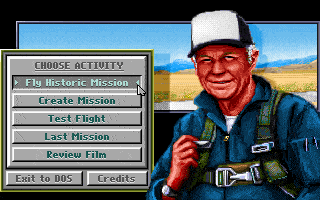In history there are people whose legacy becomes larger than life. Ask anyone who built and flew the first airplane, and you’d be hard-pressed to find someone who isn’t at least aware of the accomplishments of the Wright brothers. In a similar vein, Chuck Yeager’s pioneering trip into supersonic territory with the Bell X-1 airplane made his name essentially synonymous with the whole concept of flying faster than the speed of sound. This wasn’t the sole thing he did, of course: he also fought in WWII and Vietnam and worked as an instructor and test pilot, flying hundreds of different airplanes during his career.
Yeager’s insistence on making that first supersonic flight, despite having broken two ribs days earlier, became emblematic of the man himself: someone who never let challenges keep him from exploring the limits of the countless aircraft he flew, while inspiring others to give it their best shot. Perhaps ironically, it could be said that the only thing that ever held Yeager back was only having a high school diploma.
On December 7, 2020, Chuck Yeager died at the age of 97, leaving behind a legacy that will continue to inspire many for decades to come.
The Right Stuff

During the second World War, airplanes had undergone many changes to improve their performance, but the propeller-based airplanes of the time encountered practical limits even as they tried to fly ever faster and higher. While the advent of rocket and turbojet engines got around some of these limitations, one soon became aware of the dangers posed when approaching the speed of sound sound — the so-called transonic region.
The aerodynamics of this transition from subsonic to supersonic flight were poorly understood in the 1940s when the US began a joint research project on supersonic aircraft. The Bell X-1 was a research aircraft which was used to investigate this transonic region. Lacking solid data on what airplane shape would work best across sub- and supersonic speeds, a shape was picked which was known to be stable at supersonic speed: a Browning .50-caliber machine gun bullet.
Having solved this problem, all that was left was finding a test pilot who would want to fly this rocket-powered plane through the sound barrier. This term was coined during WW2 when fighter pilots would encounter the effects of compressibility: when nearing the speed of sound the aerodynamics acting upon the airplane would change dramatically, limiting them to around 800 km/h (even in a dive) above which they risked instability due to stalled control surfaces and other control issues which would result in a loss of the airplane.
Test pilots in the late 1940s were exposed to a lot of risk considering the countless airplane designs that had been dreamed up, built, and thrust into production in a matter of months during the war. But by all accounts this was a new frontier.
Join the Army, They Said

On February 13, 1923, a farming family in Myra, West Virginia welcomed their newest family member with the birth of Charles Elwood Yeager. By the time he was five, the family moved to Hamlin, West Virginia, where Yeager would attend Hamlin High School. His first experience with the military was during the summers of 1939 and 1940, when as a teenager he would attend the Citizens’ Military Training Camp at Fort Benjamin Harrison in Indiana, before he enlisted with the US Army Air Forces (USAAF) on September 12, 1941, where he became an aircraft mechanic stationed at the George Air Force Base in California.
When he enlisted, he was not eligible for flight training because of his age and educational background, but as the US entered the war a mere three months later, the recruiting standards by the USAAF were altered. On March 10, 1943 Yeager graduated from Class 43C and received his pilot wings. His first airplane was the Bell P-39 Airacobra, which his group trained on before they would ship overseas on November 23rd that year.

Stationed at RAF Leiston, Yeager would fly P-51 Mustangs, naming his P-51 Glamorous Glen, after his then girlfriend, Glennis Faye Dickhouse. Initially he flew seven missions without any issues, shooting down one enemy aircraft. Then, on his eighth mission his aircraft was shot down over France.
Fortunately, he was not captured by the enemy, but found himself escorted by the Maquis (French resistance) to Spain. While with the Maquis, he assisted them with tasks that did not involve directly fighting, such as the constructing of bombs, a skill which he had picked up from his father. On May 15, 1944 he was back in England.
Originally, Yeager and other “evaders” (pilots who had escaped from behind enemy lines) would not be allowed to fly over enemy terrain again, as they might be captured by the enemy and reveal secrets about the Resistance. Along with fellow P-51 pilot Fred Glover he went straight to the Supreme Allied Commander, General Dwight D. Eisenhower to protest this. Ultimately he was cleared for combat again, according to Yeager:
I raised so much hell that General Eisenhower finally let me go back to my squadron. He cleared me for combat after D Day, because all the free Frenchmen—Maquis and people like that—had surfaced.
Ultimately, Yeager would fly 61 missions during WW2, flying his last mission on January 15th of 1945, returning to the US the next month. With his now-wife Glennis pregnant with their first child, he chose an assignment at the Wright Field as this was close to their home. There he would be stationed under the command of Colonel Albert Boyd, head of the Aeronautical Systems Flight Test Division Here it was also that he would become a test pilot, qualifying due to his large number of flight hours and experience with aircraft maintenance.
Just Doing the Job

Bell Aircraft originally tapped test pilot Chalmers “Slick” Goodlin to fly the X-1 on its maiden test flight, but when he demanded $150,000 ($1.7 million in 2020) for the task, the USAAF instead picked Yeager as pilot. It was now 1947 and Yeager had graduated from Class 46C at the US Air Force Test Pilot School (412th Test Wing of the Air Force Materiel Command) at Wright-Patterson Air Force Base in Ohio to become a test pilot at Muroc Army Air Field (today: Edwards Air Force Base).
Two days before the scheduled test flight, Yeager fell from a horse, breaking two ribs. Despite the pain, he got a civilian doctor to tape him up so that he could still carry out the flight. Telling only his friend and fellow project pilot Jack Ridley about it. On the day of the flight, it was Ridley who helped improvise a mechanism which Yeager could use to seal the hatch of the X-1 “Glamorous Glennis” aircraft, as Yeager was in too much pain to do so the regular way.
The rest, as one says, is history. Although the successful flight wasn’t made public until a year later, his name in history had already been secured at that point. The flight itself was relatively uneventful. According to Yeager, the aircraft experienced a lot of turbulence as it went through the transonic phase, but once it went supersonic, it was very smooth. This flight would pave the way for many more supersonic flights, ultimately enabling the routine transitioning to supersonic travel of not only jet fighters but also commercial aircraft, while deepening our understanding of aerodynamics at trans- and supersonic speeds.
The Sky is the Limit
After his first supersonic flight, Yeager would go on to test more aircraft like the X-1 as well as many unlike it, such as the MiG-15 (from a North Korean defector) and the M2-F1 lifting body aircraft. When civilian National Advisory Committee for Aeronautics (NACA) pilot Scott Crossfield became the first pilot to travel at twice the speed of sound in 1953 with a D-558-2 Skyrocket, Ridley and Yeager managed to push the record to Mach 2.44 in the new X-1A, past the previous record and just in time before Crossfield’s achievement would be celebrated, in what they called Operation NACA Weep.
That particular X-1A flight almost went wrong, but Yeager managed to recover the aircraft in the nick of time. This was hardly the end of the excitement, however. During his deployment in Korea and the Vietnam War he would command several squadrons and wings. He also became the first commandant of the USAF Aerospace Research Pilot School, which also trained astronauts. Unfortunately, due to only having a high school diploma, he was not eligible for becoming an astronaut himself, leaving that door firmly closed.
A Broad Legacy
Chuck Yeager is quite literally a household name at this point. During the 1980s and 1990s a movie called The Right Stuff was released based on the 1979 book of the same title. This describes the test pilots involved in aeronautical research, including Yeager as well as those who would go on to be astronauts in Project Mercury, the first human spaceflight by the US. Yeager himself makes a cameo in this movie, as the barkeep in the bar where he in his own words “probably spent more time than in aircraft cockpits”.

In 1987 Chuck Yeager’s Advanced Flight Trainer was released for home computers, which allows the player to take control of a number of airplanes, including the X-1, which features in-game comments by Yeager, such as when one crashes the plane. Yeager was a technical consultant on that game, as well as on Chuck Yeager’s Air Combat, which was released in 1991 and features missions Yeager has flown. Both Advanced Flight Trainer and Air Combat can now be found as abandonware.
Beyond public outreach, Yeager’s expertise was sought even after retirement in 1975, when after the 1986 Challenger disaster, Yeager was assigned by President Reagan to the Rogers Commission which was charged with investigating the disaster.
On October 14, 1997, Yeager flew a new Glamorous Glenn III (an F-15D Eagle) past Mach 1 to celebrate the 50th anniversary of that first time in the X-1, and again in 2012, as co-pilot in an F-15 at the age of 89. During the speech in 1997 he ended with the words: “All that I am… I owe to the Air Force.”, yet it is hard not to see him as an instrumental part of everything that was achieved in aeronautics.
More recently, I had the honor of following Chuck Yeager on Twitter, where (along with other legends like Buzz Aldrin), they are just interacting like normal people, despite their major achievements. I admired Yeager for his quick wit and down to earth commentary. He was eager to educate and teach people, and an all-around pleasant personality.
While his legacy will live on, Chuck Yeager as a person will be sorely missed.
No comments:
Post a Comment